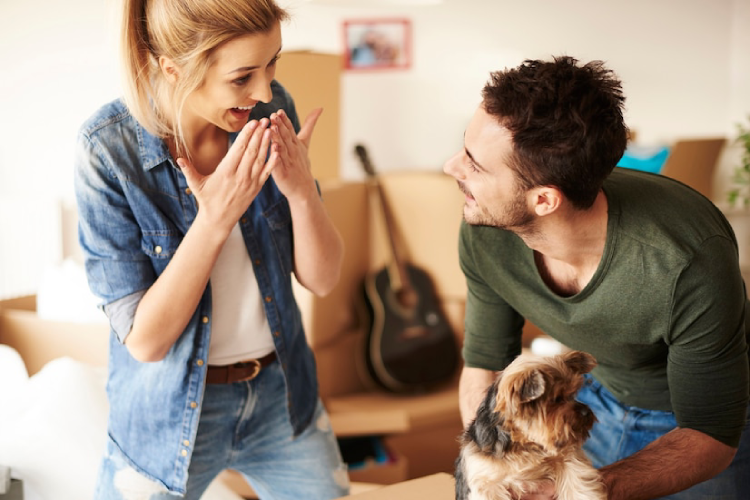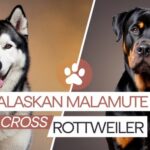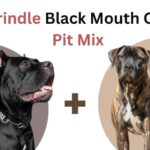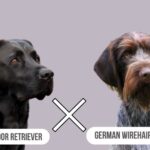Dogs are known for their loyalty and companionship, but at times, their behavior can be puzzling. One common issue many dog owners face is the question: “Why does my dog growl at my husband but not at me?” Understanding the reasons behind such behavior requires an in-depth look at canine communication, past experiences, and factors influencing a dog’s bond with its family members. This blog delves into why dogs may show favoritism, fear, or discomfort toward certain people and offers strategies to address growling behavior.
Understanding Canine Communication and Behavioral Differences
Growling is one of the many ways dogs communicate. It’s not merely a sign of aggression; it can convey a range of emotions from fear and discomfort to protective instincts. Growling is a nuanced form of canine communication, and understanding it is key to solving behavioral differences.
- Why Dogs Growl
Dogs growl for various reasons, such as:- Fear: A fearful dog might feel threatened or scared.
- Protection: The dog could be trying to protect a resource, like food or a favorite toy.
- Discomfort: Some growls stem from physical discomfort or emotional unease.
- Back-Off Warning: Growling often serves as a warning to others, signaling them to back off.
Recognizing growling as more than just noise can help you interpret your dog’s emotional state. It’s a sophisticated way for dogs to express their feelings, and understanding this communication is crucial for addressing behavioral issues.
- The Role of Sense of Smell and Vision
A dog’s good behavior is heavily influenced by their sense of smell, bark, bite, and vision. They may growl at someone because of unfamiliar scents or behaviors they perceive through their keen sensory organs. These senses contribute to the dog’s perception of people and can play a significant role in behavioral differences.
Factors Contributing to Behavioral Differences
- Bonding and Interactions
Dogs are social creatures with emotions, preferences, and even favorites. If your dog is growling at your husband but not at you, it may be because of differences in how each of you interact with the dog.- Favoritism: Dogs often develop a stronger bond with one person in the household, usually due to the way that person interacts with them. Favoritism can be influenced by:
- Consistency in Rules and Boundaries: Dogs prefer consistency. If one person is more consistent with commands, rewards, and boundaries, the dog may show favoritism toward them.
- Body Language and Tone: Dogs are highly attuned to body language and vocal tone. A softer, more reassuring tone may lead the dog to favor one person over another.
- Consistency in Behavior
Dogs need clear and consistent boundaries. Inconsistent rules can confuse them, leading to stress and a potential behavioral difference toward different people in the household. If one person is stricter and the other more lenient, the dog might show signs of favoring one person while feeling unsure or stressed around the other.
- Favoritism: Dogs often develop a stronger bond with one person in the household, usually due to the way that person interacts with them. Favoritism can be influenced by:
- Past Experiences and Associations
Dogs may growl at certain people based on their past experiences. For instance, if a dog has had negative interactions with men in the past, they might growl at your husband simply because he is male.- Fear of Men: Some dogs are more fearful of men due to their size, deeper voice, or body language. If your dog has had negative experiences with men whether in your home or in previous environments this may explain why they growl at your husband.
- Breed and Socialization: Certain breeds may be more predisposed to fear or aggression toward unfamiliar people, especially men. Early socialization and positive experiences can help reduce this fear.
Strategies for Managing and Correcting Growling Behavior
Addressing growling behavior requires patience, understanding, and consistency. Correcting this behavior should start with identifying the root cause and then applying appropriate strategies.
- Positive Reinforcement
Positive reinforcement is one of the most effective ways to manage growling behavior. Reward your dog for calm behavior around your husband. This will create a positive association, helping reduce the fear or discomfort that leads to growling. Praise, treats, and affection can help reinforce this positive behavior. - Desensitization and Counterconditioning
Desensitization involves gradually exposing your dog to the thing that causes fear (in this case, your husband) in a controlled way, starting with low-intensity interactions. Over time, your dog will begin to feel more comfortable. Pairing these exposures with treats (feed the dog) and praise (counterconditioning) can further reinforce the desired behavior. - Consistency and Patience
Consistent boundaries, rules, and training methods are crucial. It’s important that both you and your husband follow the same guidelines when interacting with your dog. This helps reduce confusion and stress in your pet, and over time, it can minimize growling behavior. - Reducing Opportunities for Aggressive Behavior
If your dog is regularly growling at your husband, try to reduce the opportunities for this behavior to occur. For example, avoid situations where your dog feels cornered or threatened. Make your husband’s presence a positive experience by offering treats and encouraging calm interactions.
Conclusion
When your dog growls at your husband but not at you, it’s not a sign of aggression but rather a form of communication. Understanding the reasons behind this behavior—whether they stem from fear, past experiences, or inconsistencies in interactions—can help you address and correct it. With strategies such as positive reinforcement, desensitization, and consistency, you can help your dog feel more comfortable and reduce growling behavior.
By understanding and addressing the root cause of your dog’s growling, you can create a more harmonious environment for both your pet and your family. Behavioral issues like growling are common but manageable with the right approach and care.
FAQs
Why does my dog growl at my husband but not at me?
Your dog might growl at your husband due to past negative experiences with men, differences in bonding, or inconsistencies in behavior between you and your husband.
What should I do if my dog growls at my husband?
Address the growling by reinforcing positive dog behavior, using desensitization techniques, and ensuring consistent dog training and interactions between your dog and husband.
Can growling be a sign of aggression?
While growling can signal discomfort or fear, it’s not always a sign of aggression. It’s important to assess the context and take appropriate steps to understand and address the underlying issue.
Why does my dog growl and wag his tail?
Growling while wagging the tail can indicate a mix of emotions, such as excitement, uncertainty, or a warning. The tail wag doesn’t always mean the dog is happy; it could also signal nervousness
What should I do if my puppy growls at me?
If your puppy growls at you, ensure you’re using positive reinforcement and clear boundaries in your interactions. Avoid scolding the puppy for growling; instead, focus on building trust and understanding the reason behind the behavior.







